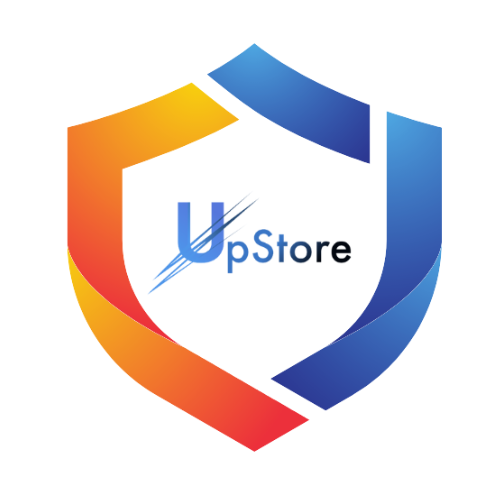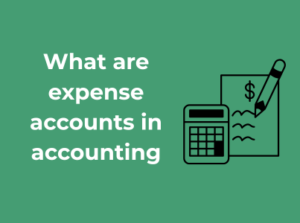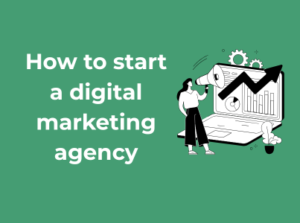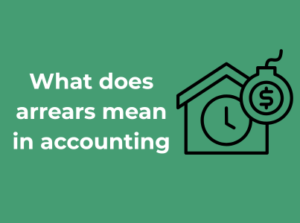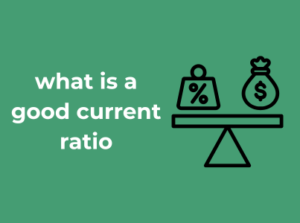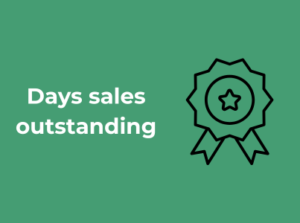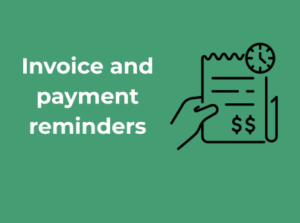Let’s be honest – late payments are one of those things every business owner dreads. They don’t just mean you’re waiting for your money; they have a ripple effect that can shake up your cash flow, your relationships with vendors, and even your bottom line. But how big is this impact, really? Let’s break it down.
Why Late Payments Are More Than Just a Delay
When your clients delay payments, your hands can feel tied. Those budget plans you spent time crafting? Suddenly, they’re harder to stick to. Expenses like payroll, product restocking, or utility bills don’t wait for anyone, and facing these costs without timely income can force you into uncomfortable choices, like dipping into savings or taking on costly short-term loans. And let’s not even get started on how it feels to have a vendor chasing *you* because you can’t pay them on time.
This doesn’t just throw off your business operations—it can affect your reputation. Maintaining good, consistent financial standing with suppliers, partners, and creditors is key to building trust and sustaining those relationships. Late payments coming downstream disrupt this flow—think of it as a chain reaction.
The Emotional and Strategic Toll
Lest we forget, there’s also a non-monetary cost: stress and frustration. Chasing down payments (sometimes repeatedly) can drain your time and mental energy, which should ideally be spent on growing your business, brainstorming the next big idea, or improving customer service.
Beyond personal stress, late payments may push you to consider undesirable strategies just to make ends meet. For instance, some businesses end up offering discounts for early payments to cover their operating cycles quicker. While discounts can be helpful, in the long term, they can chip away at your profitability by setting a precedent where customers might ONLY pay faster if perks are tied to the action!
Putting a Number on It
To put things into perspective, late payments (especially for small to medium businesses) account for significant lost revenue every year. According to a survey conducted by some financial experts, businesses write off nearly 1.5% of their receivables annually as bad debt due to non-payment. That might sound small, but in reality, it can translate into thousands of dollars per year, money you’ve already earned but may never see.
How Invoice Clarity Makes a Difference in Receiving Payments Faster
Ever felt your invoices are out in the world, floating in some mysterious limbo, ignored despite all your hard work? The answer may lie in a simple but overlooked factor: invoice clarity. Let’s explore why having clear invoices can transform your payment cycle and keep those cash flows happy and healthy.
What Does Invoice Clarity Actually Mean?
Invoice clarity is about ensuring your customers have no reason to delay payment due to confusion. Think about it—a cluttered, ambiguous, or hard-to-read invoice could easily end up at the bottom of someone’s “later” pile. A crystal-clear invoice, on the other hand, makes it absolutely obvious what the client is paying for, by when, and how.
Clear invoices communicate professionalism. They reduce back-and-forth communication and help align expectations faster. Without a clear invoice, even your most well-meaning clients might take longer to settle dues—not because of bad intent, but simply because they’re unsure about the details.
The Key Ingredients of a Clear Invoice
So, what exactly makes an invoice “clear”? Let’s break it down step by step:
- Simple Layout: Don’t overwhelm your clients with too much information packed into tiny fonts. Use clean, readable designs and highlight key details.
- Accurate Details: Messy figures, vague descriptions, or missing due dates can make payments crawl. Double-check every entry before sending your invoice.
- Payment Terms: Spell these out! Include the due date, any late fees, and acceptable payment methods. For instance, “Payable within 15 days by bank transfer, credit card, or check.”
- Helpful Labels: If your invoice has itemized charges, label them clearly: What’s this? Why is it billed? This adds transparency and prevents clients from second-guessing costs.
- Contact Information: Always provide details—like your email or phone—so clients can reach out quickly if they have questions about the invoice.
Why Clarity Translates to Faster Payments
The beauty of clarity is that it leaves no room for doubt. When an invoice is easy to understand, it answers your client’s questions before they’re even asked. They’re more likely to pay swiftly when they’re not caught in confusion or unsure about specifics. Transparency also builds trust; a client who trusts you will rarely hesitate to settle payments on time.
There’s also a psychological aspect: a concise, professional invoice gives the impression that you take your business— and their business—seriously. This subtle persuasion works wonders in moving your invoice to the top of their to-do list.
Common Mistakes to Avoid
Let’s make sure your invoices don’t accidentally end up on the “ignored” list. Here’s what to steer clear of:
- Jargon Overload: Using too much industry-specific language or vague descriptors like “miscellaneous services” is confusing. Keep your language clear and direct.
- Incomplete Payment Instructions: Not specifying how to pay or where to transfer funds often leads to delays. Be explicit!
- Tiny Fonts: If your clients need to squint to read your invoice, it’s time for a redesign.
Crafting Messages That Clients Respond To
Let’s be real – reaching out about a pending payment can feel awkward, even if it’s totally necessary. But crafting the right message can make a world of difference in how your client perceives it and—most importantly—how quickly you get paid. Communication matters here. So, let’s break down how you can create payment reminder messages that actually get clients to respond (and take action). Ready? Let’s dive in!
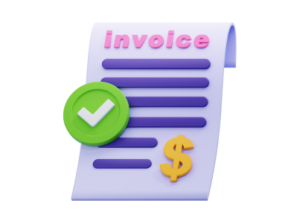
1. Start with a Friendly and Professional Tone
No one likes receiving abrupt or impersonal payment reminders. Think about how you’d feel if someone demanded payment in a cold or overly aggressive way. Probably not great, right? Instead, aim for a tone that’s friendly but professional. For example:
“Hi [Client Name],
I hope this email finds you well! I just wanted to send a quick reminder about Invoice #[XXXXX], which is due on [due date]. Let me know if you have any questions or need assistance—I’m happy to help!”
By choosing a tone that’s polite and approachable, you’re more likely to prompt a positive response. After all, nobody wants to feel accused or pressured, even if they’re in the wrong.
2. Be Clear and Straightforward
Clarity is key when crafting payment reminders. Clients often juggle multiple responsibilities, and your message shouldn’t require any guesswork. Ensure all the necessary details are right there in the email, such as:
- Invoice number
- Due date
- Amount due
- Payment methods or links
The goal? Make it as simple as possible for the recipient to know what’s due and how to pay it. For example:
“This is a kind reminder that Invoice #[XXXXX] for $[amount] is due by [due date]. You can make payment via [payment method] by following this link: [payment link].”
See how this eliminates confusion? Your clients will appreciate the clarity, and it increases the chances that they’ll act on your email quickly.
3. Add a Personal Touch
Generic templates can feel robotic. Personalizing your message goes a long way in showing your client that you’re paying attention to them as an individual, not just a transaction. Even something as simple as including their name, the project details, or a quick note about your business relationship can make the message feel tailored. For instance:
“Hi [Client Name],
I enjoyed working on [specific project/service] with you, and I hope you’re as thrilled with the results as I am! This is just a gentle reminder that payment for Invoice #[XXXXX] is due on [due date].”
See the difference? A little context can make the email feel less transactional and more human.
4. Highlight the Benefit for Them
Avoid making payment reminders all about YOU. Instead, subtly remind clients how prompt payment benefits them. For example:
“By taking care of this invoice on time, you’ll ensure no delays in future projects and keep everything running smoothly!”
This approach flips the narrative. It’s not just about you getting paid; it’s about keeping the client’s experience seamless and uninterrupted.
5. Make Your Call-to-Action Clear
If your message doesn’t include a clear next step, chances are high that it’ll get ignored. After all, people are busy. Close your message by letting them know exactly what you need them to do, and when. A simple yet effective call-to-action might say:
“Feel free to reach out with any questions, but if all is clear, I would greatly appreciate it if payment could be made by [due date]. Here’s the link again to make it easy: [payment link]. Thank you so much!”
Notice how you’re guiding the client without sounding pushy? That’s the sweet spot you should aim for.
Bonus Tip: Timing is Everything
Lastly, send reminders at a considerate time. Nobody likes an email at midnight, and sending reminders too early (or too frequently) can come across as annoying. Strike the right balance by timing your reminders during working hours, and follow up only if necessary.
When to Send Payment Reminders Without Annoying Your Clients
We get it—nobody likes being bombarded with reminders, especially when it comes to money. However, sending payment reminders is a necessary part of running a business and ensuring healthy cash flow. That being said, timing your reminders correctly can make all the difference between gently nudging your clients and, well, annoying them to the point of frustration. Let’s break down how you can master the art of timely payment reminders in a way that keeps your business professional and your client relationships intact.
Why Timing Matters
Think of payment reminders as polite nudges that are as much about preserving relationships as they are about getting paid. If you send reminders too early, your clients may feel rushed or micromanaged. On the flip side, if you wait too long, the invoice might get ignored completely. Striking the right balance ensures that your reminders are seen as helpful, not nagging.
Build a Structured Reminder Timeline
The key to effective reminders is having a structured timeline in place. This ensures your messages go out at the right time and in the right sequence:
- 1 Day Before the Due Date: A friendly “due soon” reminder can be sent to draw attention to the upcoming payment, while subtlety encouraging clients to prepare for the deadline.
- On the Due Date: A polite note to let clients know their payment is now due can be helpful for forgetful customers. Keep the tone neutral and non-urgent.
- 3 to 7 Days After the Due Date: If payment is late, send a follow-up reminder while staying understanding. Sometimes life happens, and giving a slight grace period works wonders.
- 14 Days After the Due Date: At this point, it’s okay to be more direct while still maintaining professionalism. Emphasize the importance of fulfilling payment obligations for the continuity of your services.
Having a clear schedule not only ensures you stay consistent but also builds trust by showing you have a professional process in place.
Match the Tone to the Situation
The tone of your reminders is just as important as the timing. Here are some quick tips on how to keep it professional but human:
- Be Friendly: Your first reminder should always come across as polite and understanding. Use phrases like “just a friendly reminder” or “we wanted to check in.”
- Stay Professional: If payment hasn’t been received after the first few reminders, maintain a professional but slightly firmer tone. Avoid being passive-aggressive at all costs.
- Acknowledge Their Perspective: Life happens, and sometimes clients need a gentle nudge rather than a demand. Let them know you understand potential delays while still clearly communicating the need for payment.
Don’t Forget to Personalize
No one likes receiving a cookie-cutter email. Adding personal touches, such as addressing your client by name or referencing specific details about their order or project, can make the reminder feel tailored and less robotic. Clients are more likely to respond positively to a message that feels personalized and genuine.
Give Options in the Reminder
Sometimes, clients delay payments because they’re facing barriers, like technical issues or a lack of clarity on how to pay. Include a direct payment link, instructions, or options for contacting your team if they need assistance. This not only speeds up the process but also shows that you care about making things easy for them.
The Role of Automation in Keeping Track of Payments
Let’s face it: managing payments and sending reminders can be a time-consuming and sometimes nerve-wracking part of running a business. But here’s the good news—automation is your behind-the-scenes hero that makes all of this so much easier. In today’s fast-paced world, smart businesses are turning to automated systems for the heavy lifting when it comes to payment tracking and reminders. Let’s explore how automation can simplify your life.
Why Automation is a Game-Changer
Think about how many tasks you juggle daily. Now, imagine eliminating the stress of tracking due dates or manually sending dozens of reminders. Sounds good, right? That’s exactly what automation can do for you. By using this technology, you’ll gain:
- Accuracy: Automation ensures that reminders go out at the right time, every time, minimizing the risk of human error or forgetfulness.
- Time Savings: Instead of drafting emails or double-checking payment records, you can focus on growing your business.
- Consistency: Your clients will receive gentle, professional nudges without fail—this builds trust and keeps things professional.
How Does Payment Automation Work?
At its core, automation involves setting up software or tools that can track your invoices and alert your clients automatically. Here’s how it typically works:
- Schedule Your Reminders: Set a timeline for when payment reminders should be sent, such as a week before the due date, on the due date, and even after.
- Customize Messages: These tools can send reminders tailored to your brand voice, ensuring they feel personal yet professional.
- Track Payment Status: Many systems keep you updated in real-time on who has paid, who is overdue, and who needs to be followed up with.
With these simple steps, automation keeps the entire payment process organized without requiring constant manual effort from you.
Choosing the Right Automation Tool
Not all payment automation tools are created equal, so keep your eyes peeled for features that suit your business needs. Look for solutions that include:
- Customizable templates for personalized reminders.
- The ability to integrate with your existing accounting software.
- Real-time notifications for overdue payments.
- Analytics that help you spot trends, such as which clients frequently pay late.
By selecting the right tool, you’ll not only streamline payment tracking but also improve your cash flow significantly.
Striking a Balance Between Automation and Personalization
Here’s a friendly piece of advice: while automation is powerful, don’t let it make your process feel robotic. Clients appreciate reminders that feel human. Strike a balance by incorporating features like dynamic personalization (e.g., addressing them by name) and including warm, professional messaging in your reminders.
For instance, instead of sending a generic “Your payment is overdue” message, try something like: “Hi [Client’s Name], just a friendly reminder that invoice #1234 is due on [due date]. We appreciate your prompt attention to this!” It’s polite, clear, and still automated—win-win!
Personalization vs. Standard Templates: Striking the Right Balance
When it comes to sending payment reminders, one of the key dilemmas businesses face is deciding between using personalized messages or sticking to standard templates. Both options have their place, and the trick lies in knowing how to balance them to connect with your clients without overstepping boundaries. Let’s explore this balancing act in detail and discover how to craft reminders that resonate.

Why Personalization Matters
Personalized payment reminders can create a sense of trust and professionalism, reminding clients that they’re more than just a number on an invoice. By tailoring messages, you can:
- Build strong client relationships: A personalized approach shows that you value the client, fostering goodwill and cooperation.
- Avoid miscommunications: Clear and client-specific references in your messages reduce the chance of confusion about payment amounts or due dates.
- Increase responsiveness: A customized communication feels more thoughtful, which can encourage quicker replies and action.
The Benefits of Standard Templates
On the other hand, standard templates save time, ensure consistency, and can be highly effective when crafted well. They’re especially useful for businesses managing multiple clients or handling large volumes of invoices. Here’s why standard templates shouldn’t be overlooked:
- Efficiency: Spend less time drafting and editing messages, freeing you up for other priorities.
- Professional tone: Templates often conform to business best practices, helping maintain a polite and authoritative communication style.
- Automation-friendly: Ready-to-use templates integrate seamlessly with automation tools, ensuring reminders go out on time without manual intervention.
Finding the Perfect Balance
Now that we know the pros of personalization and standardization, how do we bring the two together? It’s all about creating a system that combines the efficiency of templates with the familiarity of personalized communication.
- Segment Your Client Base: Not all clients are the same—some may appreciate friendly and warm communications, while others may prefer concise professional notes. Use data to group clients by their preferences or transaction history.
- Add Personal Touches to Templates: Start with a strong template and customize key details, like the client’s name, invoice particulars, or a brief acknowledgment of their business relationship. A small addition of familiarity can go a long way.
- Create Template Variations: Instead of one-size-fits-all templates, develop multiple variations for different scenarios—like first reminders, overdue notices, or follow-ups for long-term clients. This makes your communication feel contextually appropriate, even if automated.
- Test and Tune: Pay attention to how different clients react to your communication style. Experiment with varying degrees of personalization and track the response rates to identify what works best for your business.
Tools and Tips for Success
Striking the right balance doesn’t have to be an uphill battle. Many digital tools, like customer relationship management (CRM) software or payment reminder systems, allow for dynamic templates that auto-populate client-specific fields. This ensures a personal touch within a standardized framework.
Also, always keep the tone professional but approachable. Remember, your ultimate goal is to remind clients of a pending payment without making them feel uncomfortable or pressured—and that’s where balanced communication truly shines.
Essential Features to Look for in Payment Reminder Software
Let’s face it, managing payment reminders can be a tricky balancing act. If you lean too much on manual processes, you might exhaust your team or miss critical deadlines. Relying solely on generic software? You risk losing that personal touch or key functionality. That’s why having the right **payment reminder software** can be a complete game-changer for your business. But how do you determine what makes a tool stand out? Here’s a breakdown of the essential features to keep an eye on:
1. Automation Without Complexity
The best software will simplify your processes without overwhelming you with confusing interfaces or hard-to-grasp workflows. Look for tools that allow you to schedule reminders automatically based on due dates, overdue statuses, or custom timelines. The idea is to take this task off your plate, so you can focus on what really matters—running your business!
For instance, does the software enable you to set up automated nudges like:
- A friendly ‘due soon’ email before the invoice deadline
- Gentle reminders once a payment is overdue
- A final follow-up before escalation
Automation is great, but find tools that still let you tweak the tone and timing when necessary. No one likes robotic, one-size-fits-all messages.
2. Customizable Messaging
Payment reminders need to reflect your brand. After all, they’re often one of the last touchpoints your clients see post-service. Look for software offering full messaging customization: the ability to use your tone, language, and branding.
Imagine sending a reminder email that begins with:
“Hi [Client’s First Name], we hope everything is going great with [specific project completed]. We noticed the payment due for [invoice number] hasn’t made its way through yet. Let us know if you need any help completing the process!”
That level of personalization leaves a better impression than a stiff, generic template. The right software helps make this level of care effortless.
3. Multi-Channel Communication
Everyone communicates differently. Some clients prefer email, others respond faster to text messages or even phone calls. Your software should support multiple channels, giving you the flexibility to reach clients where they’re most attentive. And yes, these channels should be integrated, making tracking responses simple!
4. Analytics and Reporting
Wouldn’t it be nice to know exactly which reminders are actually working? Advanced payment reminder tools provide you with metrics, such as open rates, response times, and payment success per reminder. This way, you can tweak your approach based on real data, becoming more effective without guesswork.
5. Seamless Integration with Your Accounting/CRM Software
Nowadays, software shouldn’t operate in silos. The ideal payment tool will integrate directly with your accounting or customer relationship management (CRM) systems. It should easily pull invoice details, due dates, and customer info into one central hub.
For example, if you’re using QuickBooks or Xero, the reminder tool should sync in real-time—it’s all about efficiency! Integration avoids duplicate data entry and keeps everything aligned across your business platforms.
6. Scalability and Affordability
Whether you’re a small business with a handful of clients or a growing enterprise, your software should fit your current needs and grow with you. Many platforms offer tiered models, letting you expand features as your business scales. And of course, affordability matters—after all, the goal is to improve cash flow, not drain it!
7. Security You Can Rely On
When it comes to finances, safety is paramount. The chosen tool should offer robust encryption, secure data storage, and a trustworthy track record. Look for transparency in how the software handles client data because protecting privacy is non-negotiable.
